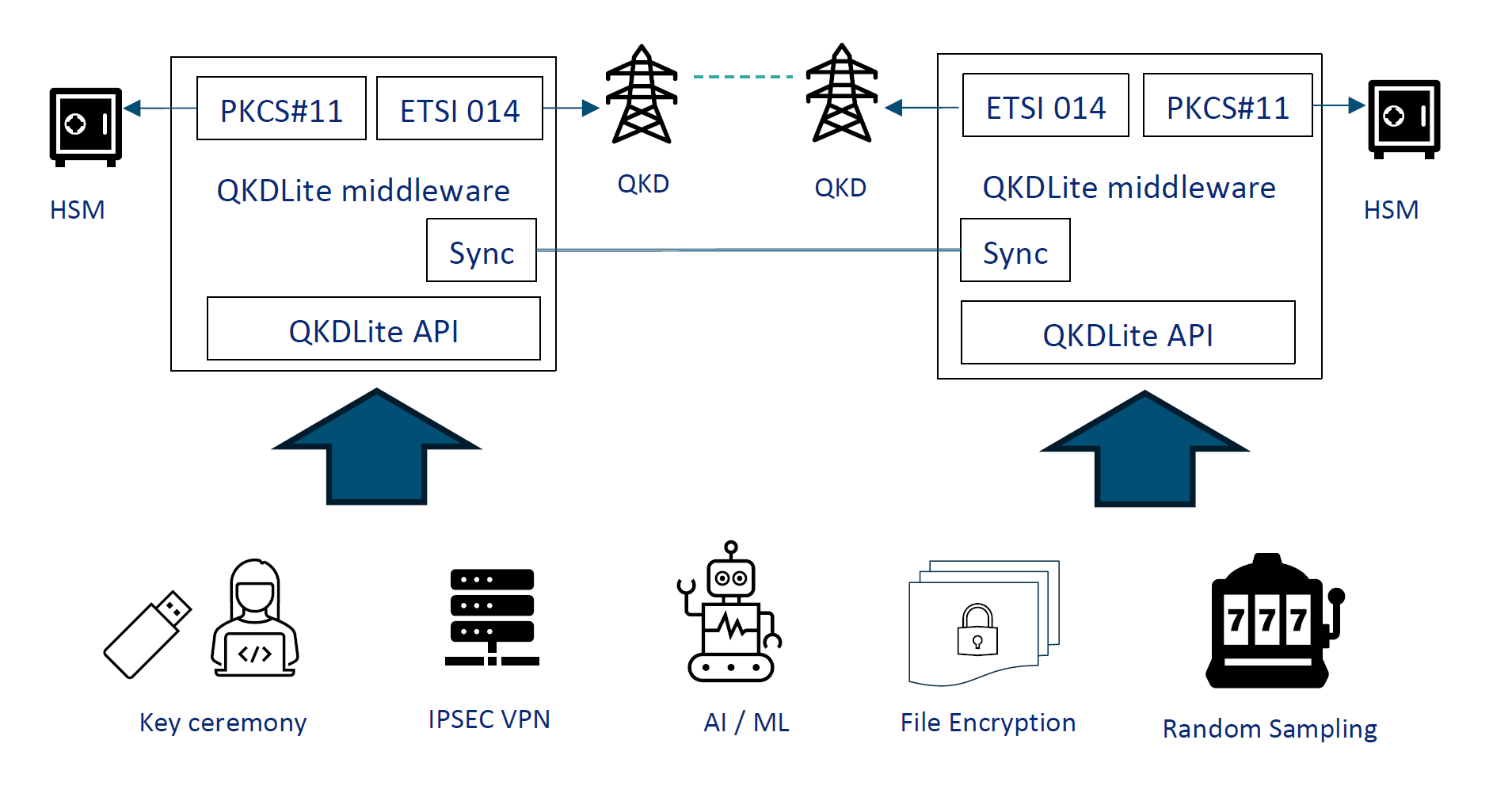

QKDLite, by pQCee, is a set of middleware modules that are designed
for businesses to connect easily and securely to QKD infrastructures
with minimal changes to the applications. It abstracts away the
protocol complexities for integrating with technical standards such
as ETSI QKD 014, PKCS#11, RFC8784, FIPS 197, and PCI-DSS to present
a unified interface that focuses on secure key generation and
management. For more information, please visit our
website.

Available keys at HSM_A:
-
Available keys at HSM_B:
-
QKDLite connected to: HSM_A
Select file to upload and encrypt. (Max file size: 10MB)
QKDLite connected to: HSM_B
Select encrypted .qkde file to upload for decryption. (Max file size: 10MB)
Please contact info@pqcee.com if you have any questions on this demo.